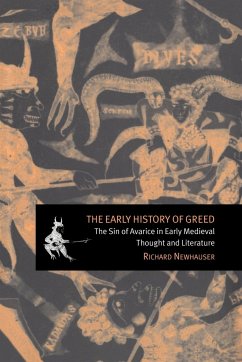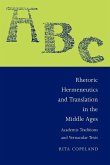The first full-length study of the early history of greed, through texts from the first to tenth centuries CE.
The history of avarice as the deadliest vice in western Europe has been said to begin in earnest only with the rise of capitalism or, earlier, the rise of a money economy. In this first full-length study of the early history of greed, Richard Newhauser shows that avaritia, the sin of greed for possessions, has a much longer history, and is more important for an understanding of the Middle Ages, than has previously been allowed. His examination of theological and literary texts composed between the first century CE and the tenth century reveals new significance in the portrayal of various kinds of greed, to the extent that by the early Middle Ages avarice was available to head the list of vices for authors engaged in the task of converting others from pagan materialism to Christian spirituality.
Review quote:
'Newhauser has created a thought-provoking study that points beyond moralism to economic theory.' Journal of Ecclesiastical History
Table of contents:
List of abbreviations; Preface; 1. Alms and ascetes, round stones and masons: avarice in the early church; 2. Ascetic transformations I: monks and the laity in eastern Christendom; 3. Ascetic transformations II: soaring eagles or safety in the herd - from anchoritic to cenobitic monasticism; 4. Ascetic transformations III: the Latin west in the fourth and fifth centuries; 5. Secularizing avarice and cupidity; Epilogue: Future perspectives; Appendix; Notes; Bibliography; Indexes.
Hinweis: Dieser Artikel kann nur an eine deutsche Lieferadresse ausgeliefert werden.
The history of avarice as the deadliest vice in western Europe has been said to begin in earnest only with the rise of capitalism or, earlier, the rise of a money economy. In this first full-length study of the early history of greed, Richard Newhauser shows that avaritia, the sin of greed for possessions, has a much longer history, and is more important for an understanding of the Middle Ages, than has previously been allowed. His examination of theological and literary texts composed between the first century CE and the tenth century reveals new significance in the portrayal of various kinds of greed, to the extent that by the early Middle Ages avarice was available to head the list of vices for authors engaged in the task of converting others from pagan materialism to Christian spirituality.
Review quote:
'Newhauser has created a thought-provoking study that points beyond moralism to economic theory.' Journal of Ecclesiastical History
Table of contents:
List of abbreviations; Preface; 1. Alms and ascetes, round stones and masons: avarice in the early church; 2. Ascetic transformations I: monks and the laity in eastern Christendom; 3. Ascetic transformations II: soaring eagles or safety in the herd - from anchoritic to cenobitic monasticism; 4. Ascetic transformations III: the Latin west in the fourth and fifth centuries; 5. Secularizing avarice and cupidity; Epilogue: Future perspectives; Appendix; Notes; Bibliography; Indexes.
Hinweis: Dieser Artikel kann nur an eine deutsche Lieferadresse ausgeliefert werden.




![Goscelin of St Bertin: The Book of Encouragement and Consolation [Liber Confortatorius] Goscelin of St Bertin: The Book of Encouragement and Consolation [Liber Confortatorius]](https://bilder.buecher.de/produkte/34/34107/34107476m.jpg)



